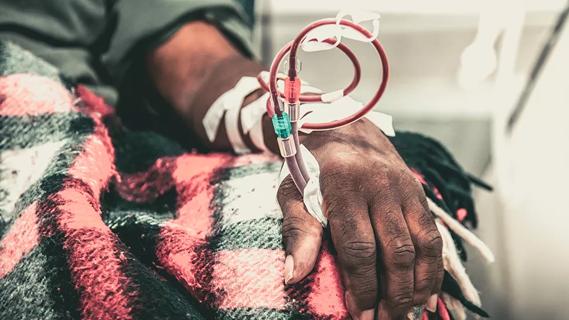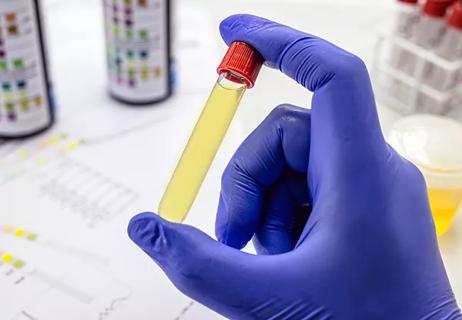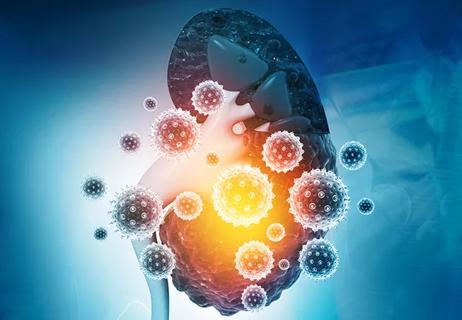Longer duration improves waste removal, nutritional status

Cleveland Clinic is a non-profit academic medical center. Advertising on our site helps support our mission. We do not endorse non-Cleveland Clinic products or services. Policy

Evamaria Anvari, MD
In the 1960s the universally accepted gold standard for a hemodialysis (HD) session for chronic and end-stage renal disease patients was eight hours, three times per week.
As the demand for HD increased, and with improvements in the dialyzer technology and an evolution in the concept of dialysis adequacy as measured by the Kt/V formula, the length of dialysis sessions was reduced. Because of the high demand for hemodialysis, eight-hour treatments were too long to allow realistic facility-based care. Four-hour treatments were easier to achieve and more affordable. As a result, in the 1980s dialysis session times contracted to four hours, three times per week, especially in the United States.
In the 1990s, research comparing dialysis outcomes in the United States to other countries that had continued to offer longer dialysis treatments began to show that reduced dialysis times were associated with increased death rates. This finding renewed interest in slower, longer dialysis.
Currently, the conventional dialysis session is four to five hours, three times per week. Unfortunately, however, for a variety of reasons many patients throughout the United States still dialyze for less than four hours.
Longer treatment provides more efficient removal of small and mid-sized molecules, improves nutritional status, better controls anemia and hyperphosphatemia and facilitates asymptomatic fluid removal by ultrafiltration, thereby reducing blood pressure and cardiovascular mortality.
In-center nocturnal intermittent hemodialysis (NIHD) is performed for seven to eight hours, three times per week in a clinic setting, with dialysate flow rate of 400 mL/min and blood flow rate of 250 mL/min. The National Kidney Foundation Kidney Disease Outcomes Quality Initiative guideline for urea kinetics for NIHD is a target single pool Kt/V (spKt/V) of 1.4 per hemodialysis session, the same as for conventional dialysis.
The cost of NIHD is higher than that for conventional hemodialysis, but there is a decrease in average medical expenses, including prescription drugs and hospital admissions. In addition, nocturnal dialysis sessions create the opportunity for patients to hold daytime jobs, with the accompanying economic and social benefits from increased employment. The resulting healthy, well-nourished, normotensive hemodialysis patient will account for a smaller additional health care cost.
Nutritional status is an important part of HD patients’ overall management. Malnutrition is common in these patients and is mostly due to reduced appetite, dietary restrictions, increased protein and energy requirements due to chronic inflammation and dialysis, and reduced physical activity. Malnutrition is associated with increased mortality and morbidity.
The long duration of NIHD results in improved elimination of waste products, phosphorus and fluids, and receiving dialysis at night results in less disturbances of daytime eating patterns. Therefore, patients have less diet and fluid restrictions, require less or no phosphate binders, and their improved appetite allows them to consume more protein and calories. As a result, they have higher serum albumin levels. Higher albumin levels are associated with better outcomes. Patients also report increased energy levels and improved daytime cognitive function. This allows them to become more independent and to pursue full-time employment or other daytime activities.
Short HD sessions require increased ultrafiltration rates, and in some cases this leads to adverse reactions including more hypotensive episodes and symptoms such as cramps during the dialysis session. This prevents adequate fluid removal, making blood pressure more difficult to control. Elevated blood pressure correlates with higher cardiovascular mortality and lower survival. Another benefit of NIHD is improved blood pressure control, regression of left ventricular hypertrophy and improved cardiac function, leading to reductions in morbidity and mortality.
Better control of anemia and lower requirements of erythropoietin stimulating agents (ESA) may be another benefit from long HD as conducted nocturnally. Research results are controversial. Some short-term studies show no difference, while other long-term studies report improvements. The proposed mechanism is increased clearance of middle- and high-molecular-weight uremic toxins that inhibit erythropoiesis in bone marrow, as well as a decrease in inflammatory cytokines as compared to patients on conventional dialysis.
Nocturnal in-center hemodialysis has clinical advantages and is an alternative dialysis modality that clinicians should not overlook. Our patients have a full range of choices, including peritoneal dialysis, conventional in-center hemodialysis, daily short home hemodialysis and long-slow nocturnal in-center hemodialysis. This diversity allows our dialysis patients to choose how much time and effort they are willing to dedicate to dialysis in exchange for better health and well-being.
Dr. Anvari is a clinical associate staff member of the Cleveland Clinic Glickman Urological & Kidney Institute’s Department of Nephrology and Hypertension.

Clinicians should individualize dosing practices based on patient risk factors and preferences

Fully-automated process uses preop CT, baseline GFR to estimate post-nephrectomy renal function

Could mean earlier treatment, but also could have negative effects

Identifying barriers in the renal genetic assessment of Black patients

Getting patients to their goal blood pressure

Study highlights benefits of nephrologist-led urine sediment analysis

Using sequencing data to identify novel factors linked to kidney disease with unknown origin

Program plays key role in diagnosis and management of genetic kidney diseases